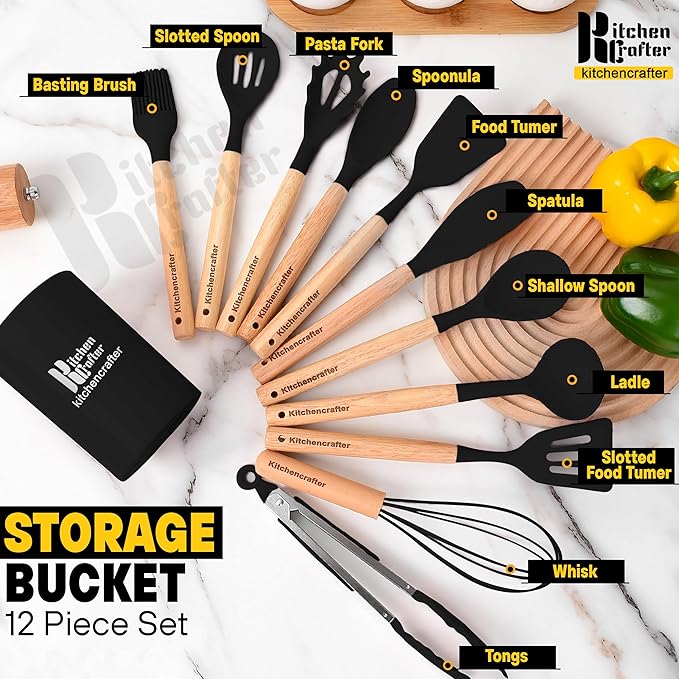Today, people have turned to be environmentally conscious about climatic change and sustainability. Most people have started looking for strategies to reduce their carbon footprint. A good place to start is within the kitchen. It is through these eco-friendly Kitchenware that you can be able to help your home improve and assist society and the whole world at large and avoid any waste generation in the process. Let’s navigate you through the new world of environmentally friendly cooking devices and equipment.
Why Eco-Friendly Kitchenware?
Kitchenware made of non-sustainable materials, such as plastics and non-recyclable metals, contributes to pollution and resource depletion. Eco-friendly options reduce waste, minimize toxins, and support ethical practices.
1. Reduce Waste: Biodegradable and recyclable materials reduce unnecessary landfill contributions.
2. Minimize Toxins: Many sustainable options are free from harmful chemicals such as BPA and phthalates, thus ensuring safer cooking.
3. Support Ethical Practices: Most eco-friendly products are formulated through fair trade and sustainability in the production process.
4. Save Resources: Bamboo, stainless steel, and glass are some of the materials that have been proven to be more renewable and durable than the others.
5. Save Money in the Long Run: Durable and reusable kitchenware makes one use less, hence saving money in the long run from frequent replacements.
Sustainable Kitchenware Materials:-
When getting eco-friendly kitchenware, look for these sustainable materials:
1. Bamboo:
Bamboo is a fast-growing, renewable resource ideal for cutting boards, utensils, and even dish racks. It is light in weight, tough, and antibacterial by nature. Moreover, bamboo products are sleek and modern in design, which will easily fit most kitchen designs.
2. Stainless Steel:
Durable and 100% recyclable, stainless steel is ideal for pots, pans, and utensils. Long-lasting compared to non-stick cookware that contains harmful chemicals, stainless steel is also a great heat retainer, versatile for a variety of cooking methods, making it a must-have for any eco-conscious chef.
3. Glass:
Glassware and cookware are free of chemicals, easy to clean, and recyclable. The glass is tempered for added strength, and the most popular use of jars is storing foods, which is also good because glass airtight seals prevent foods from spoiling.
4. Silicone:
Food-grade silicone is just an awesome product for baking mats, Spatulas, and storage bags. It can be reused several times, with high heat tolerance, and completely free of chemicals. It has versatile applications to accommodate microwaving, ovens, or the freezer. This makes it possible to categorize it as the one-stop solution for most green kitchen environments.

5. Ceramic:
It is a nontoxic ceramic-coated cookware that has replaced the traditional non-stick pans. Look for lead and cadmium-free ceramics. Ceramic bakeware and bowls are a touch of elegance for your kitchen but safe and green.
6. Wood:
Utensils made from sustainable woods are biodegradable and add a rustic feel to your kitchen. Wooden utensils are gentle with the surface of the non-stick cookware and mostly fashioned in ways that last several years with the right care.
Tips in Choosing Eco-Friendly Kitchenware
1. Look for certifications: Check if the wood products are FSC certified or if the products are Fair Trade. These will be indicators that the products have been sourced responsibly and are safe for the environment.
2. Invest in quality: Though it may seem expensive at first, higher-quality items will last longer and do not need to be replaced as frequently. In the long run, durable kitchenware also reduces waste.
3. Avoid single-use products: Instead, choose reusable products like beeswax wraps instead of plastic wrap or glass jars instead of disposable containers. Reusable products are just as effective for the environment while also more convenient in everyday use.
4. Fix and Upcycle First: Break those old items apart and see if they can be fixed up or repurposed. For instance, old pots can be used as flower pots, and chipped plates can be decorations.
5. Shop Locally: Buying from local artisans and manufacturers saves on carbon footprint related to shipping, and it encourages your local economy.
Benefits of an Eco-Friendly Kitchen:-
Creating an eco-friendly kitchen not only helps the earth but also enhances your lifestyle. Here are a few benefits:
- Healthier Cooking Environment: Non-toxic materials ensure that your food is free from harmful chemicals.
- Cost Savings: Reusable and durable items reduce the need for frequent purchases, saving money in the long run.
- Increased Awareness: is also heightened since selecting kitchenware with a green touch fosters an attitude about consumption, creating the inspiration for making even greener decisions elsewhere.
- Natural Elegance: Environmental products usually add warmth and style to your kitchen while exuding elegance.
The Impact of small Changes:-
Hugely effective can be the effects found in minuscule steps as little as it seems to come. Environmentally friendly kitchen utensils may prove to be a small step to sustainability. The use of reusable utensils, non-toxic pans, and bio-degradable sponge reduces wastes from being produced and ensures you, as well as the earth, live healthy lives.
By making mindful choices in your kitchen, you’re not only embracing sustainable cooking but also inspiring others to do the same. It’s time to turn your kitchen into a hub of eco-conscious living-one small change at a time.
Shop More On:-
Shop more from our website Kitchencrafter.in